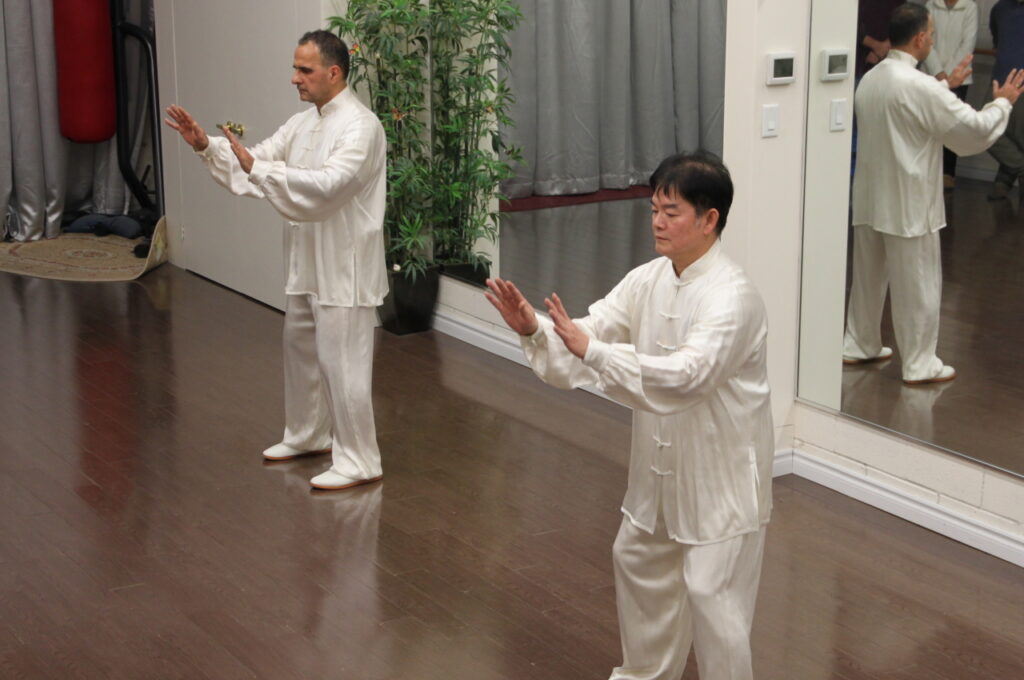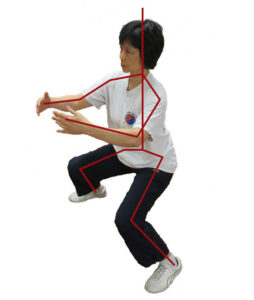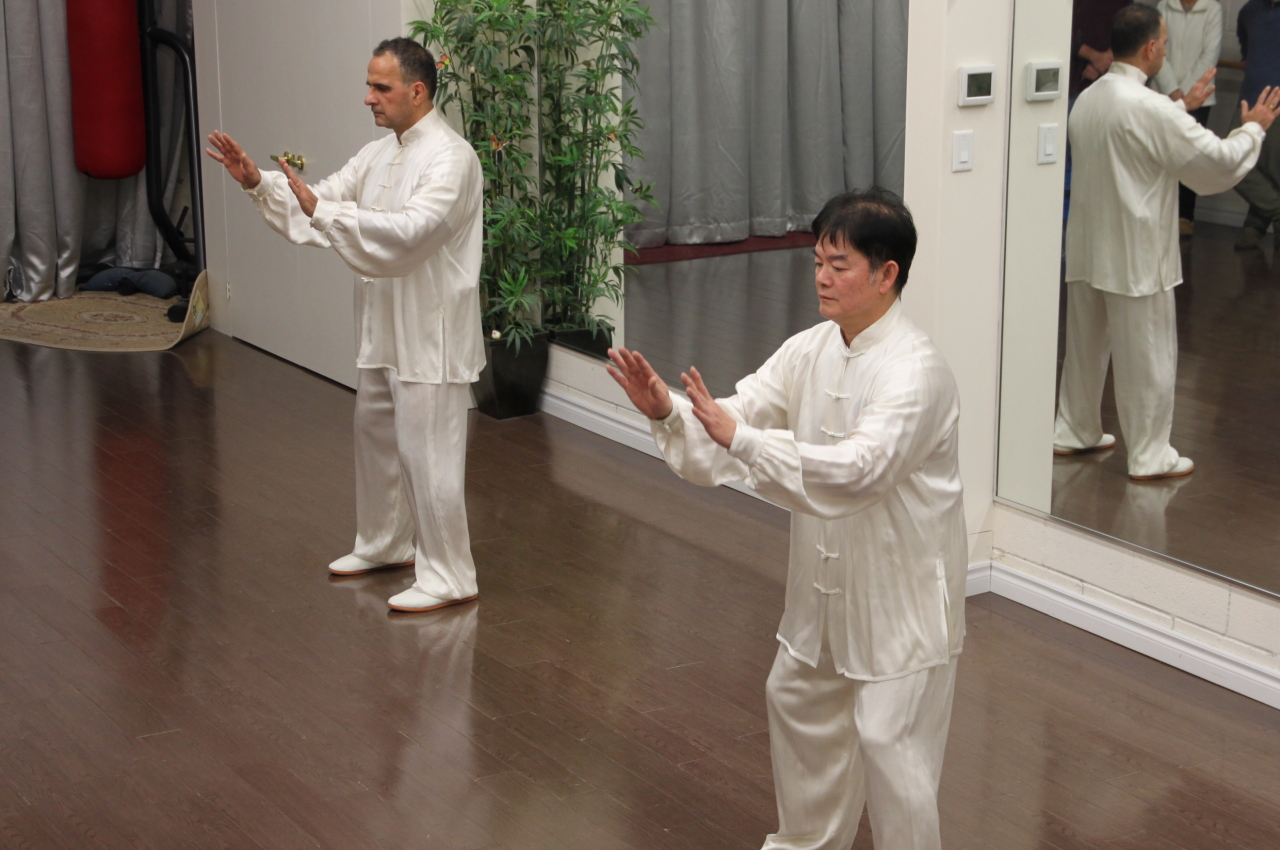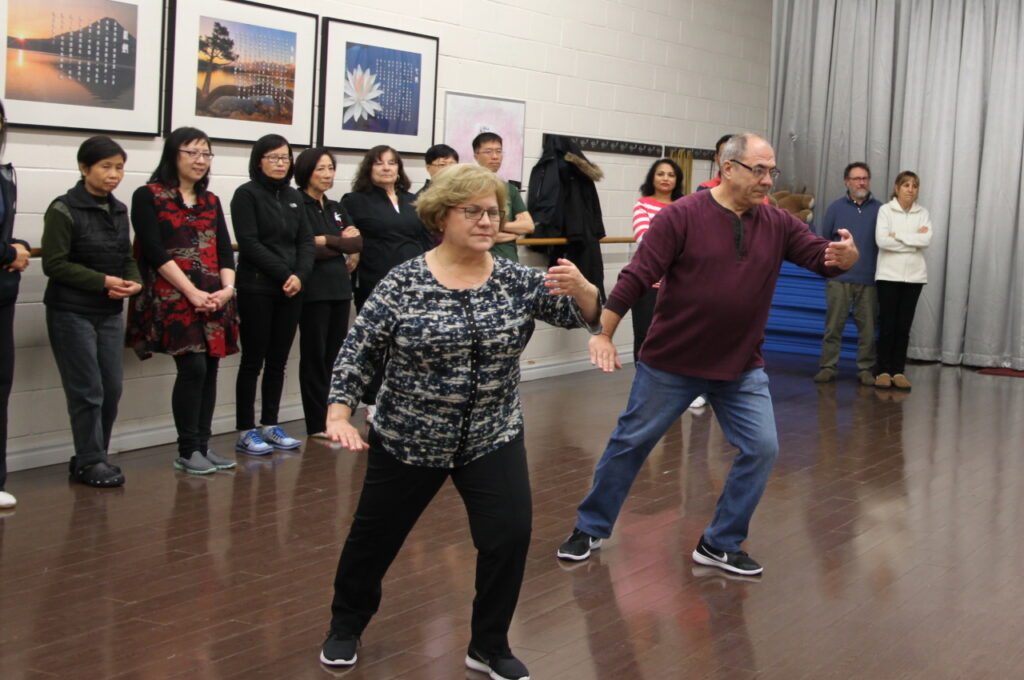Good health involves more than the condition of our bodies. Mental and emotional well-being are required, too. To achieve good health, we must address the state of the mind, body and spirit.
Our busy modern lifestyle makes it hard to find time to manage all three aspects of wellness. However, many have discovered that a moving meditation practice like tai chi is ideal for simultaneously improving mental, emotional and physical health.
Calm the Mind, Sharpen Focus and Reduce Stress with Tai Chi
Meditation requires a clear, calm mind that is focused inward. Tai chi—a traditional Chinese internal martial art practice developed many centuries ago—achieves stillness of mind through contemplative movement. Practices like tai chi are considered moving meditation or meditation in motion because each movement is made consciously with internal focus and specific intention.
Tai chi and other forms of moving meditation are ideal for those who struggle with the stillness required in a traditional meditation practice. An effective tai chi practice requires a tranquil heart and a clear mind. The nerves are calmed and stress is relieved. The powers of concentration are heightened as we seek to achieve the balance of yin and yang (passive vs. active; expansion vs. contraction) with each movement.
Tai chi provides the calming benefits of meditation, but also works the body and delivers a wealth of health benefits.
Health Benefits Derived from Tai Chi

This gentle exercise has been the subject of recent studies which collectively demonstrate tai chi’s ability to:
- Improve muscle strength
- Increase flexibility and balance
- Improve mood
- Build stamina and energy
- Reduce anxiety, depression and stress
Research also indicates that tai chi may enhance sleep quality, boost the immune system, lower blood pressure and improve total well-being.
Strengthen Muscles and Core with Tai Chi
Working core muscles using the dantian and maintaining the stretch and flex of the 5 bow lines of the body.
Tai chi is a graceful exercise that incorporates series of movements called forms. Each form is performed methodically with focused intention. The forms are thoughtfully designed to flow smoothly from one move to the next.
Tai chi strengthens muscles safely and effectively using body weight resistance. Additional resistance is created through mental focus. Movements are performed in a slow, controlled manner. Tai chi employs both concentric contractions, which shorten and strengthen muscles and eccentric contractions, which lengthen and strengthen muscles. Concentric contractions are instinctive and do not require active thought. Eccentric contractions require mental focus. Combining concentric and eccentric movements strengthens muscles more completely—decreasing the risk of injury.
The lower body and core muscle groups are strengthened during tai chi. Movements initiate from the body’s internal centre of gravity, located in the lower belly. This internal centre of gravity, known as the dantian, is also the source of our internal energy or qi. As we flow through the slow, graceful movements of tai chi, core muscles are engaged and strengthened. Incorporating weapons like the spear or long pole intensifies the firming of core muscles. The core generates the power needed to wield the weapons. Upper body muscles are also strengthened when weapons are integrated into a tai chi practice.
Gain Balance and Flexibility with Tai Chi
An inactive lifestyle deteriorates muscles and joints. Underused muscles shorten. Joints stiffen. Tense muscles and rigid joints limit range of motion, reducing flexibility. Weakened muscles and reduced range of motion hamper our ability to coordinate our movements and maintain balance when performing tasks like walking or climbing stairs. This increases the risk of injury.
Tai chi enhances balance and flexibility. Outer muscles relax, allowing a deeper stretch in the smaller musculature associated with balance and posture. Muscles lengthen and joints loosen. Range of motion is expanded through the repetition of gentle, flowing movements.
Relaxed muscles and supple joints are more pliable, increasing their ability to absorb impact. Tai chi works all of the major muscle groups, strengthens leg muscles, expands range of motion and sharpens reflexes. This improves coordination, balance and flexibility, reducing the risk of falling—especially in older adults.
Cardiovascular Benefits of Tai Chi
The slow, gentle movements of tai chi may not appear to provide cardiovascular benefits. However, the fluid movements, which initiate from the core and extend outward, work against imagined resistance. One movement continuously flows into the next, stretching and strengthening the muscles. Sustained for 20 to 30 minutes, the fluid movements of tai chi can deliver an invigorating cardio workout.
High intensity exercises may not be ideal for those suffering with certain illnesses or injuries. However, the slow, precise movements of tai chi provide a safer, more effective cardio workout for those with physical restrictions.
Tai Chi for a Full Mind, Body & Spirit Health Program
Tai chi—often regarded as meditation in motion—provides countless mental, emotional and physical health benefits. Practitioners report better overall health, increased muscle strength, a reduction in stress levels and more balance and stability. A wide range of recent studies now confirm centuries of anecdotal evidence of tai chi’s ability to improve mental, emotional and physical health. This includes relief from ailments like osteoarthritis, high blood pressure, migraines, joint pain, depression, anxiety and others.
When you practice tai chi, your mind becomes more focused. Your heart becomes calm. Your muscles are relaxed as you work through controlled movements generated from the core. With continued practice, flexibility and balance are increased. The body, mind and heart are energized, promoting the circulation of qi—vital energy—throughout the body.
Tai chi can serve as a crucial component of a holistic approach to wellness. Try a tai chi class for yourself and discover why the holistic nature of tai chi makes it one of the most well-rounded and complete activities for improving mental, emotional and physical health.



hi was wondering if I could be sent moves relaxation papers to do at home to recover from mental health problems and physical and emotional health problems. a guide to start me off .as cost of travel and time being on road is impossible as lost of work for nearly 10 months.
You can get started by practicing the Qi Gong 8 Moves routine. Watch and follow the video here: https://youtu.be/FQ4_bpMFGtI